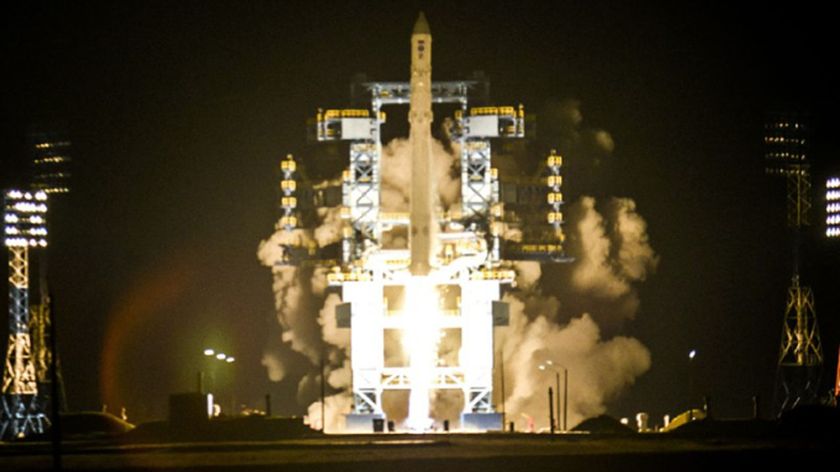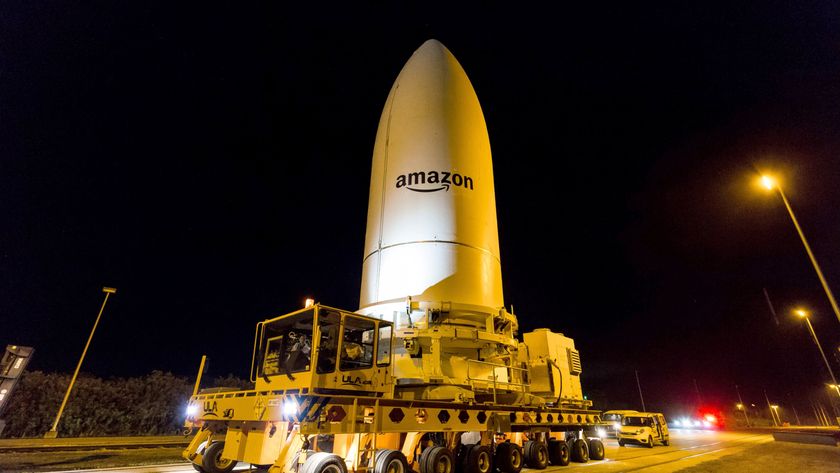Satellite Insurance Rates Driven by Capacity, Not Track Record
Insurance underwritersand brokers said the market remains healthy despite the fact that claimsslightly exceeded premiums in 2007. They said they discriminate among launchvehicles and satellite designs when they can to reflect manufacturers'different success rates, but that the market remains too small to overturn thegeneral principle that the most reliable designs in effect subsidize theinsurability of the less reliable hardware.
"Everyone wants todifferentiate and everyone differentiates" when assigning insurancepremiums to a given satellite orrocket design, said Thierry Justice, director of space insurance broker Marsh'saviation and space department. Still, he said Sept. 11 during the WorldSatellite Business Week conference here that underwriters usually are obligedto reach a compromise premium rate, whatever the project in question, if theywant to continue writing policies.
Matthieu Caillat, head ofspace underwriting at Axa Corporate Solutions, said "fair differentiation[based on past hardware performance] is limited because market capacity remainsthe main driver" determining whether rates move up or down.
Clive Smith, executivevice president at International Space Brokers, said underwriters as ofmid-September had collected more than $550 million this year in premiums andpaid out $300 million in claims following rocket or satellite failures. He saidthe total market capacity, meaning the theoretical maximum amount of coverageavailable for a single launch or satellite program, is more than $600 million.
"This is puttingdownward pressure on rates," Smith said. "The market today is robustand able to sustain another loss."
Andreas Peter, a directorof Flagstone Re, an underwriter, said any launch whose customers are seekingmore than $450 million in total coverage will find it difficult to complete theinsurance package.
Because its heavy-lift Ariane 5rocket carries two telecommunications satellites at a time, the Arianespaceconsortium of Evry, France, is usually the focus of the biggest insurancepackages assembled for a single launch.
Get the Space.com Newsletter
Breaking space news, the latest updates on rocket launches, skywatching events and more!
To assist customers inobtaining insurance, Arianespace has long offered its own, in-house Launch RiskGuarantee (LRG) to customers, for a fee. The company continues to believe that,despite currently obtaining the lowest premiums in the market, it is the victimof the market's lack of capacity.
Jean-Max Puech,Arianespace vice president for finance, said the company has used its LRG 95times since 1986 at the request of customers. Under the LRG, customers receivea free reflight within 10 months of a failure, or a cash payment or credittoward a future launch in the event of a partial failure.
The LRG compensation hasbeen applied four times in 22 years, twice for the Ariane 5 rocket and twicefor its Ariane 4 predecessor.
Insurance and launchservices officials agree that Arianespace, with 27 consecutive Ariane 5successes, now benefits from the lowest launch insurance premium rates.
Puech produced figuresthat demonstrated the effect of the more favorable rates. In the past fiveyears, he said, policies known as "L Plus One," meaning the satellite'slaunch and its first year in orbit, have totaled $20.7 billion in value.Launches aboard Ariane rockets have accounted for $6.4 billion of this amount,or 31 percent.
Arianespace customershave paid $935 million in insurance premiums, or 27 percent of the total ofnearly $3.5 billion in premiums collected industry-wide for launches. "Arianespacelaunches account for 31 percent of the total sum insured, and 27 percent of thepremiums, clearly showing that Arianespace is enjoying a lower insurance rate,"Puech said.
In the same five-yearperiod, insurers have paid out $835 million in claims related to launchfailures, leaving them with a gross profit of $2.64 billion. These figuresdo not include claims for in-orbit satellite failures, for which claims in agiven year often exceed claims for launch-related failures.
Caillat of Axa,reflecting the market conservatism that usually separates underwriters frombrokers, said the sector remains so small that a single event may upset it andcause rates to climb. He said underwriters are concerned that the number ofinsured launches scheduled to occur between September and December is highenough that, depending on their success, the market might react with higher orlower overall premium rates.
Peter ofFlagstone Re said satellites currently in orbit carry aggregate insurancecoverage of $18 billion — a potential risk that underwriters must take intoaccount when setting rates.
Join our Space Forums to keep talking space on the latest missions, night sky and more! And if you have a news tip, correction or comment, let us know at: community@space.com.

Charles Q. Choi is a contributing writer for Space.com and Live Science. He covers all things human origins and astronomy as well as physics, animals and general science topics. Charles has a Master of Arts degree from the University of Missouri-Columbia, School of Journalism and a Bachelor of Arts degree from the University of South Florida. Charles has visited every continent on Earth, drinking rancid yak butter tea in Lhasa, snorkeling with sea lions in the Galapagos and even climbing an iceberg in Antarctica. Visit him at http://www.sciwriter.us











